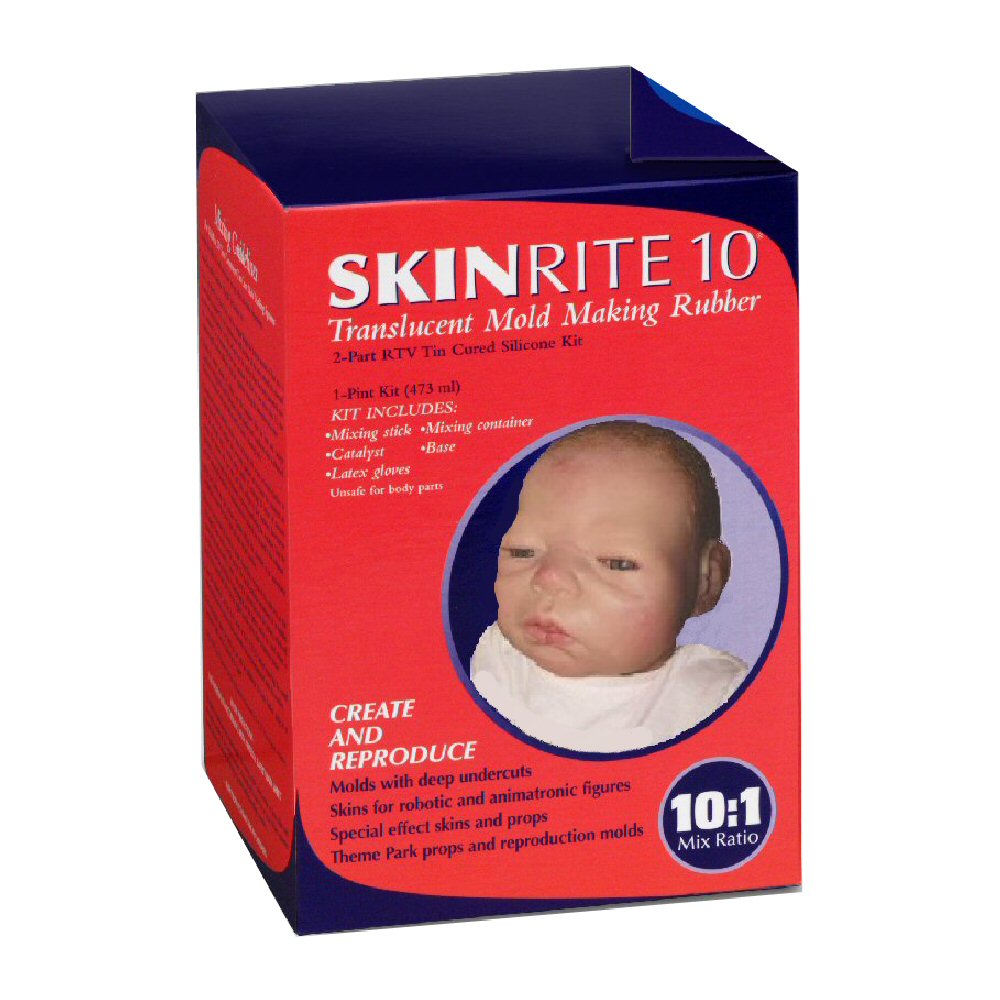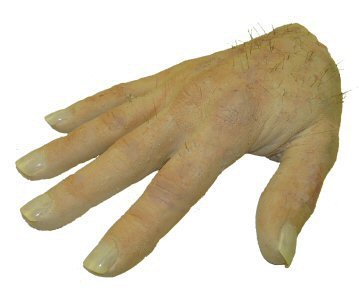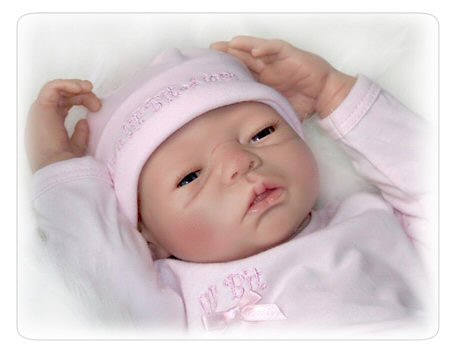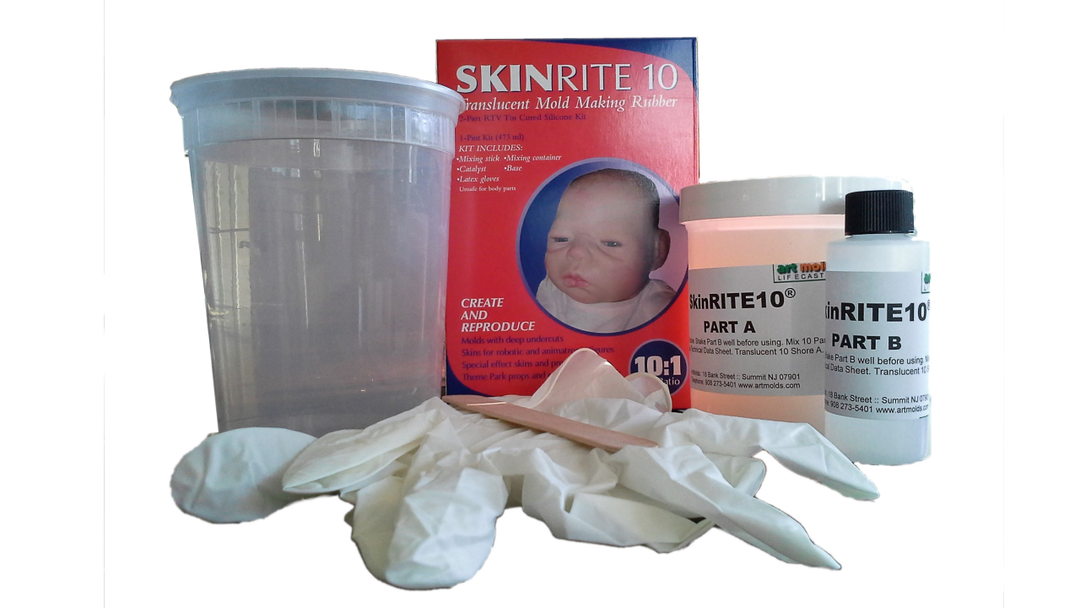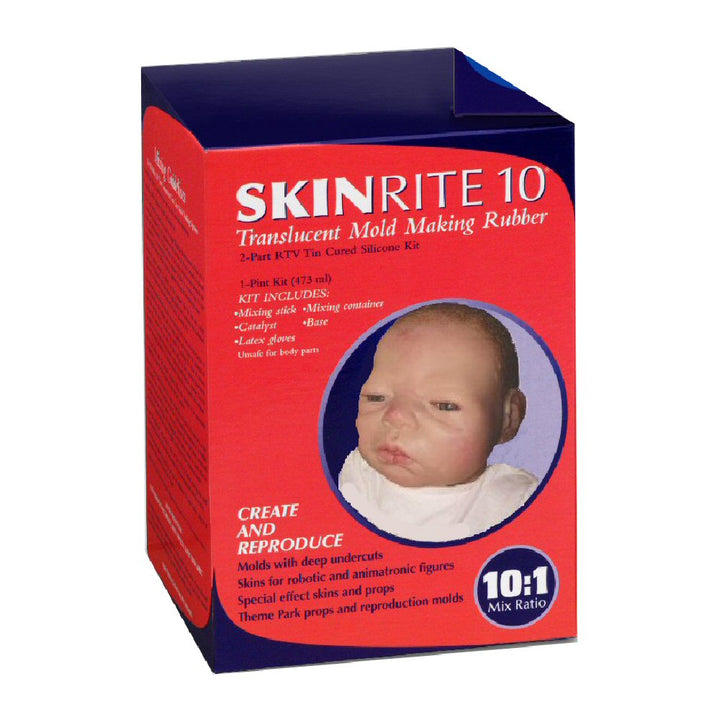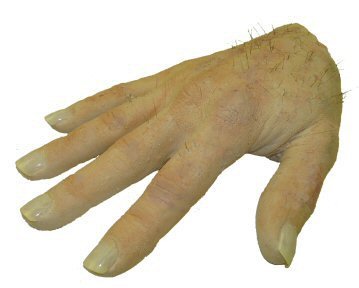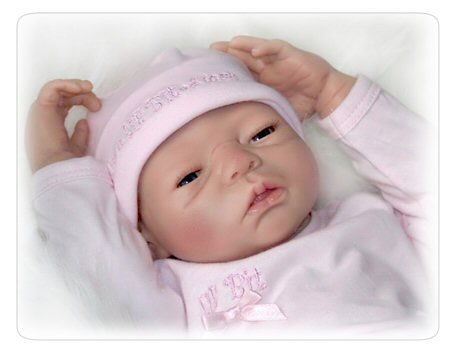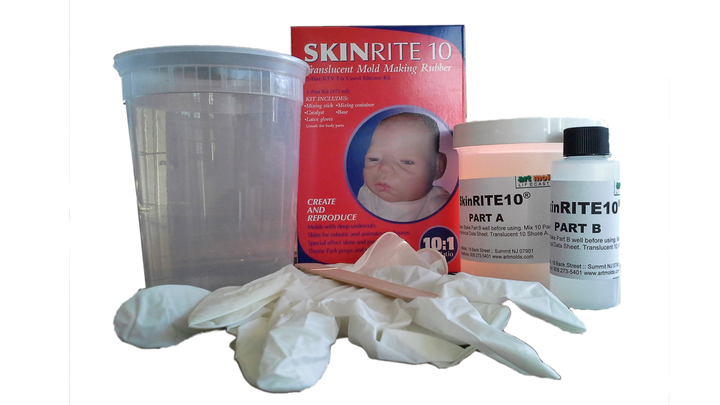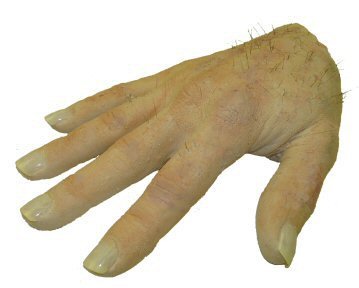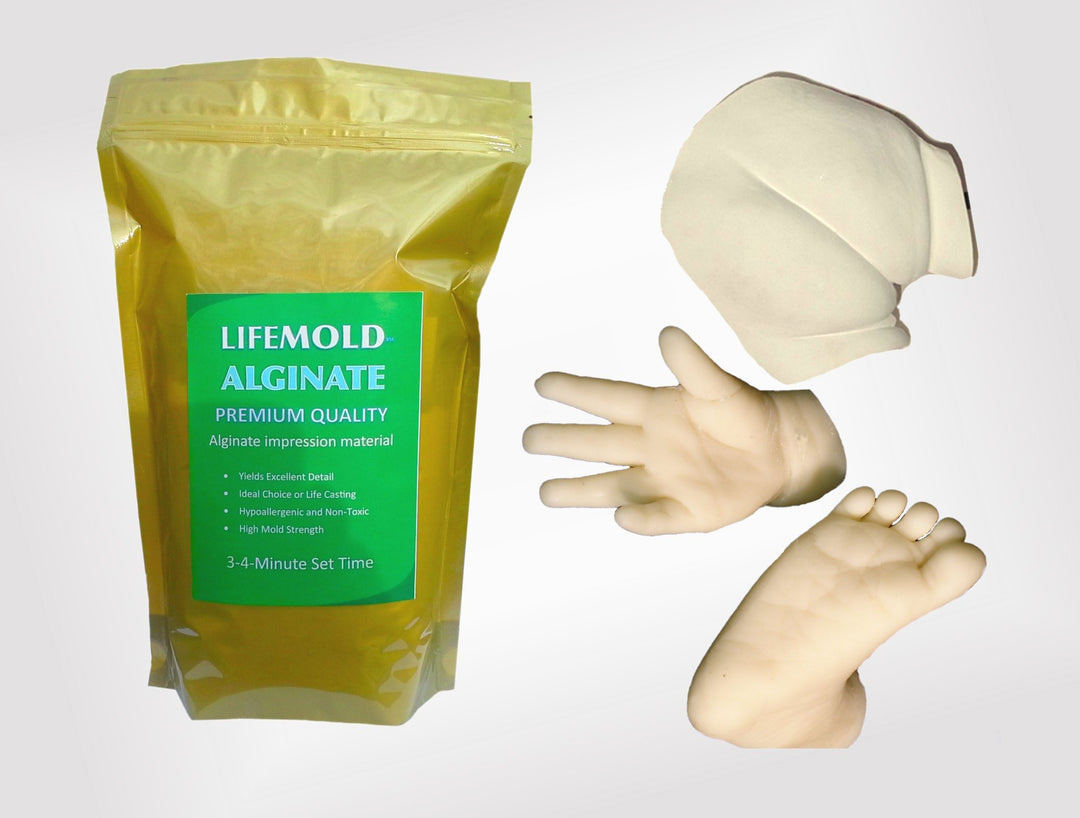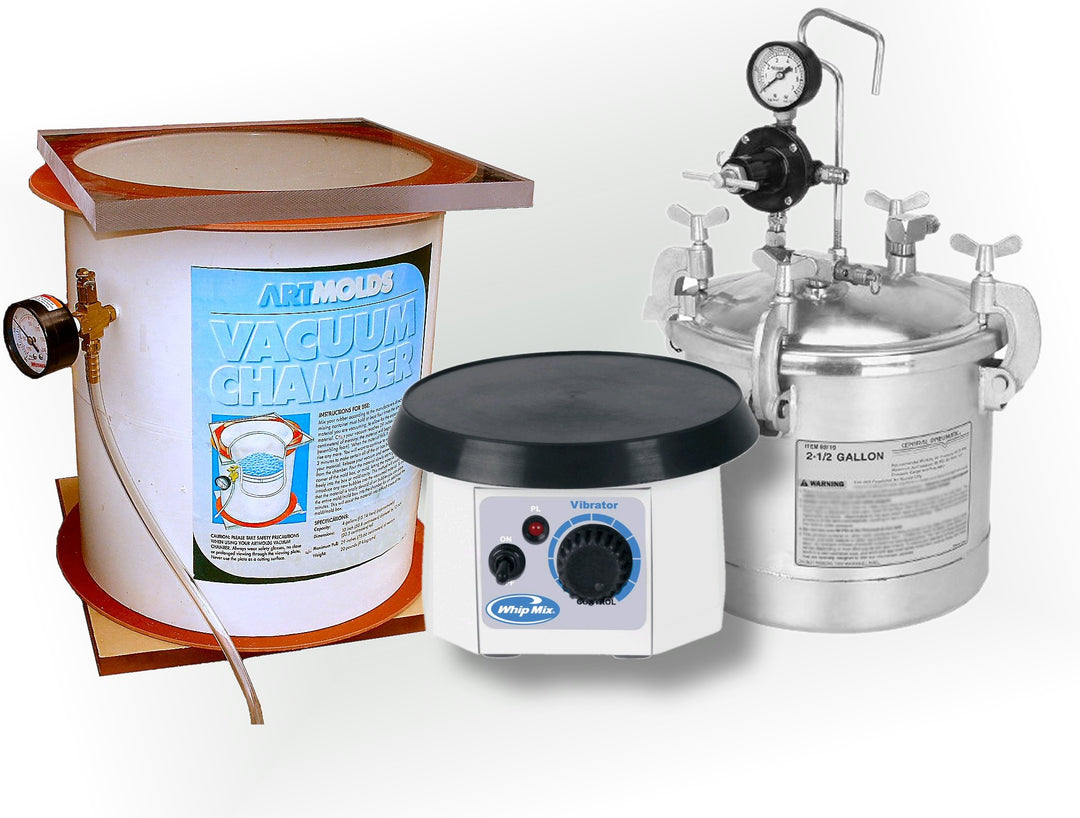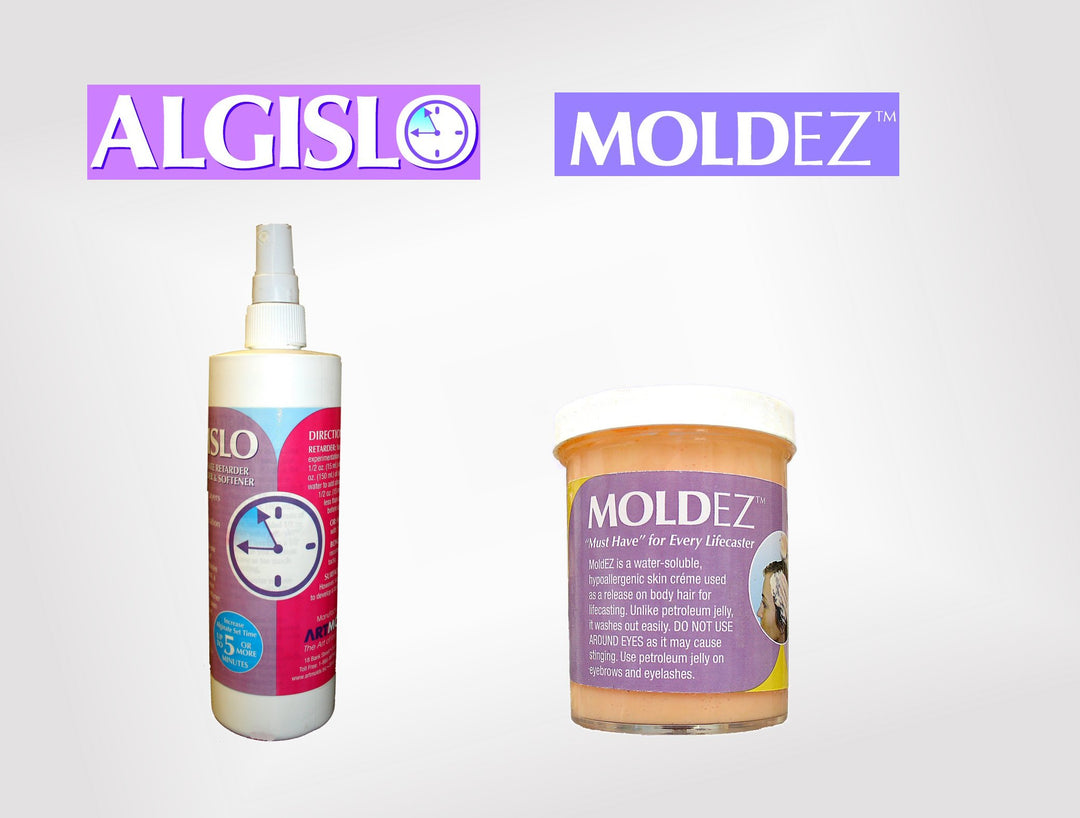SkinRite 10 Translucent Special F/X Silicone
SP300701R
SkinRite10 is a translucent high strength, room temperature cured silicone rubber. Used to simulate realistic skin especially usefuly for reborning casting and Special FX work.
SKINRITE 10 is a translucent high strength, two component, tin catalyzed, room-temperature cure silicone rubber. It is formulated as a 10 Shore A, medium viscosity rubber providing excellent elongation properties mimicking the elasticity and translucency of skin. It is used as both a casting material for realistic prosthetic skins and a molding material for easy demolding from severe undercuts.
TYPICAL APPLICATIONS
-
Molds with deep undercuts
-
Skins for robotic and animatronic figures
-
Prosthetic pieces
-
Special effect skins and props
-
Theme Park props and reproduction molds
TYPICAL CATALYZED PROPERTIES
Mixed at 24°C (75°F) and 50% R.H.
| Mix Ratio, A:B (parts by weight) at | 10:1 |
| Viscosity, cP (mPa.s) | 35,000 |
| Work Life, minutes (1) | 50 |
| Pot Life, Hours (2) | 4 |
| Demold Time, hrs at RT | 16 |
| 24 Hour Thick Section Hardness Shore A (3) | 8 |
TYPICAL PROPERTIES OF CURED RUBBER
Cured 7 days at 24° (75°F) and 50% RH
| Color | Translucent | |
| Specific Gravity | 1.10 | |
| Hardness (Shore A) | ASTM D2240 | 10 |
| Tensile Strength, psi (/mm2) | ASTMD412 | 480 |
| Elongation (%) | ASTM D412 | 620 |
| Tear Resistance, ppi (N/mm) | ASTM D624, Die B | 100 (17.5) |
| Linear Shrinkage (%) (4) | 24 Hours | 0.2 |
| 7 Days | 0.5 | |
| Coverage-cu.in/lb. (cc/kg) | 25.2 (909) | |
| Temperature Range, °C(°F) | -50 to 150 (-58 to 302) | |
SHELF LIFE
Six (6) months from date of shipment when stored at 24°C (75°F) in original containers.
MIXING GUIDELINES FOR MOLDRITE25 TWO COMPONENT TIN CURE MOLD MAKING SYSTEMS
- Stir the base (Part A) well before use (except when machine dispensing).
- Shake the catalyst container (Part B) well before use.
- This is a 10 Part A to 1 Part B mix ratio by weight. Weigh the desired amount of base into a clean mixing container. Tip the container and roll the base all the way around the sidewall up to two inches from the top. This will prevent the catalyst from becoming absorbed into the container. It is recommended that the container be filled to not more than 1/3 the container depth to allow sufficient room for expansion during the deaeration procedure, if you chose to use a vacuum procedure
- Weigh the proper amount of catalyst into the container. Mix the base and catalyst together by stirring with a stiff, flat-ended metal spatula until a uniform color is obtained. Scrape the container walls and bottom well to insure a thorough mix.
- Though not necessary for painted in casting, we recommend a vacuum chamber dearing of SkinRite.
- Place the container into a vacuum chamber and evacuate the entrapped air from the mixture using a vacuum pump capable of achieving 29 inches of mercury vacuum. The mixture will rise, crest and then collapse in the container. Interruption (bumping) of the vacuum may be necessary to prevent overflowing the container. Keep the mixture under full vacuum for 2-3 minutes after the material has receded in the container.
- Bleed air slowly into the vacuum chamber. When the chamber is at atmospheric equilibrium, remove the cover plate and take out the container.
- Pour the deaired material slowly in a steady stream from one end of the mold box so that the material flows evenly over the pattern. This should minimize entrapment of air bubbles under the flowing material. A print coat may be poured first over the pattern, which will also help reduce the possibility of entrapping air on the pattern and in the cured rubber. A mold release (petroleum jelly) may be applied on the pattern first to improve release.
- Allow the rubber to cure for 16-24 hours at 75+5°F (24°C) before removing the cured rubber mold from the pattern. Heat acceleration is not recommended with this product.
- For best results, allow the mold to air cure an additional 24 hours before using it in production. Full cure is achieved in 3-7 days.
PROCESSING INFORMATION
CATALYZED PROCESSING PROPERTIES ARE AFFECTED BY TEMPERATURE AND HUMIDITY VARIATION
- For best results, mix and cure the material at 75°F (24°C) and 50% relative humidity.
- Higher temperature and humidity will decrease the work life and pot life of the material. The faster cure will also affect the flow properties. Refrigeration of the base prior to use in hot environments has shown to improve the handling properties of this material.
- Lower temperatures and humidity will increase the work life and pot life of the material. The slower cure will increase the flow time. Cure temperatures below 68°F (20°C) are not recommended and have been found to cause a reduction in final cure hardness and properties.
- It is important that the catalyst containers are tightly closed after use. Catalyst exposed to air for extended periods of time will hydrolyze (cure). An indication of hydolysis is a film or crust formation on the surface of the catalyst. The use of hydrolyzed catalyst is not recommended and may cause incomplete cure.
SAFETY PRECAUTIONS
USE MATERIAL IN ACCORDANCE WITH MATERIAL SAFETY DATA SHEET
This rubber system uses an organometalic tin catalyst, which may irritate or burn shin and eyes upon contact. If eye contact occurs, flushing with water for at least fifteen minutes should relieve discomfort. If irritation persists, obtain medical attention.
KEEP PRODUCT AWAY FROM CHILDREN


